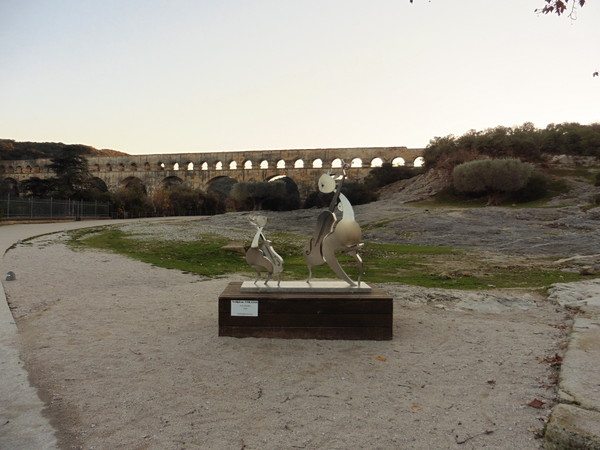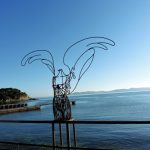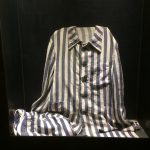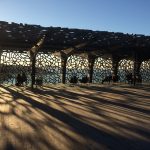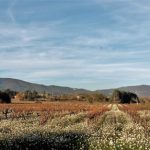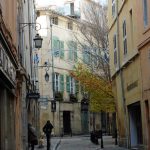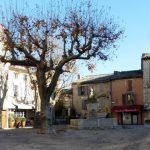Fog sat low over the valley as we headed towards the boulangerie for breakfast. It was the only thing to do because it was impossible to sleep in with the noise coming up from the streets. The council were busy pruning back the trees so all we could hear was the high pitched revving of a chainsaw.
After breakfast it was time to hit the road. Today we were heading across the Millau Viaduct to Avignon with a stop off at Pont Du Gard, the old Roman viaduct near Nimes.
As I uncovered the bike I noticed the dew on the bike cover had frozen into little diamantes. I knew it was cold but not this cold.
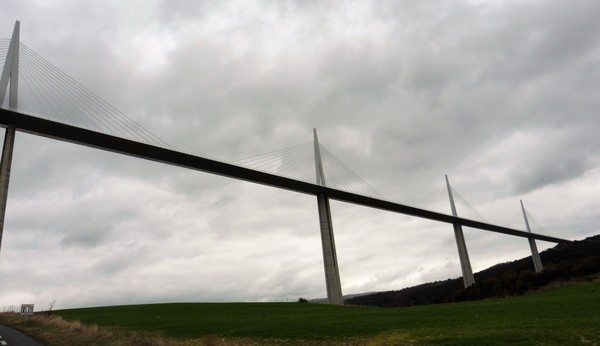
Our plan was to head north to pick up the toll road and cross Viaduct Millau, the tallest bridge in the world. However, as the low fog was playing havoc with the satnav and instead of heading north it took us south up through the gorge. The fog was unbelievably thick with visibility down to about 50 metres so we slowly picked our way up through the gorge. Near the top of the gorge the fog took on a blue glow which was pretty surreal.
Suddenly we emerged from the fog into a bright sunny day. It was an unbelievable contrast but it means we missed riding across the Viaduct.
Caylar
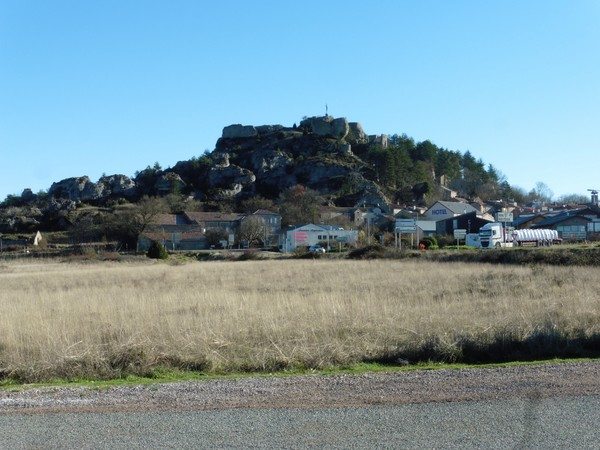
The landscape was unlike any France landscape we’d seen before. Low growing shrubs the tallest about fout feet tall and grassland. The countryside was fairly flat with the occasional rocky outcrop. It was real sheep country. A lazy breeze (too lazy to blow around you so it blows through you) was blowing straight through our various layers of clothing. Frozen to the bone we only got about ten kms before stopping in Caylar. It was just a little village just off the freeway. A place where most people stop at the fuel station but never venture the extra 500 metres into the centre.
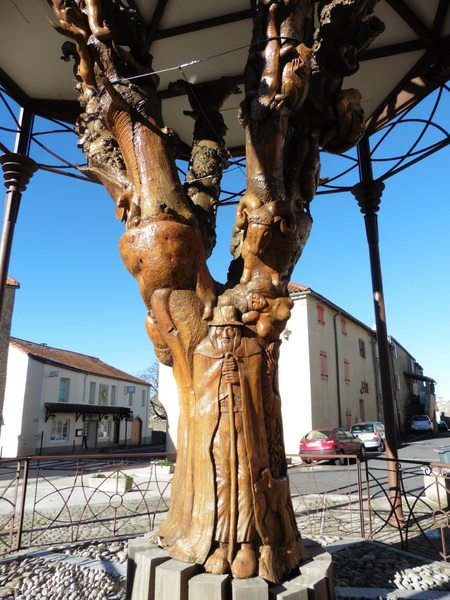
If people had ventured into the centre of Caylar they would see a spectacular sculpted oak tree. Lizards, owls, cattle, sheep, insects all peer down from the branches whilst shepherds and Templars guard the base. Sculptor Michel Chevray carved the different figures to represent the local history and environment.
The local Tabac Bar was the perfect place to warm up. Whilst warming up cradling coffee locals drifted in issuing hearty “Bonjour”. From the back room Spanish guitar drifted through the window. It was a nice local experience.
The Tabac Bar had gotten into the christmas spirit decorating the tables with Leffe Nöel brochures advertising the red spiced beer especially released around Christmas.
As we rode out of Caylar the satnav suddenly added an extra twenty kilometres prompting us to about turn and head back towards the freeway. Back on the freeway we were soon heading south passing through the tunnel beneath the mountain. The mountains separated flatlands on one side with a huge gorge on the other with low scrub growing all over it. Descending into the bottom of the gorge we were soon into grapevines country.
Vineyards were everywhere with the golden autumn leaves covering the vines. As we drew closer to Montpellier we started noticing olives, peaches, palms and of course more grapevines. By this stage the weather was boiling hot and we wondered how much the day had changed from this morning.
Arriving in Nimes, Spanish style houses painted salmon pink with terracotta tiles, olive trees and grapevines gave the city a real Mediterranean feel. The city of Nimes was an ancient roman city dating back to about 28BC. In the city are various structures built during roman occupation. These included the amphitheatre and a temple now known as Maison Carrée. However, the largest structure built by the Romans wasn’t either of these buildings but actually the water supply. From the water source at Uzés, in the first century Roman engineers constructed a series of tunnels and aqueducts to transport water fifty kilometres to Nimes.
Aqueduct at Pont du Gard
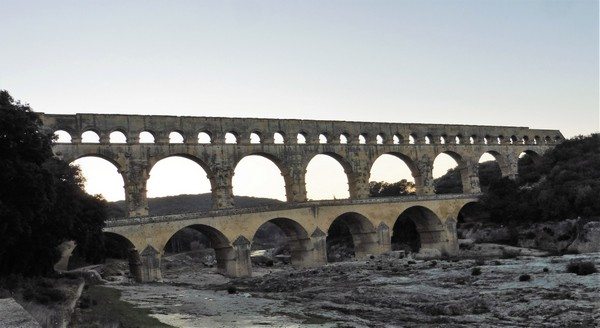
The most visible part of the water system is the Aqueduct at Pont du Gard. Although many residents in the city had wells the aquaduct was more than a water supply. It was a symbol of Roman power. Like the Nimes Coliseum the Pont Du Gard Aqueduct was part of a monumental system. The aqueduct supplied fountains, monuments, the public water sources and for the rich running water inside their mansions.
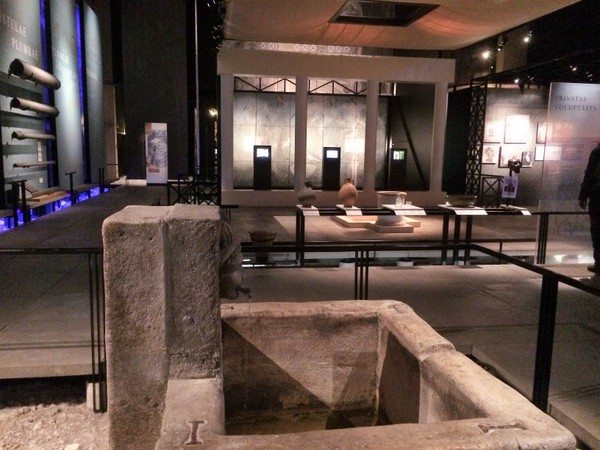
At Pont Du Gard the museum displays various exhibits in relation to the aqueduct. Videos and dioramas tell the story of how the stone was quarried and how the aqueduct was constructed. Around the museum are all sorts of displays including lead pipes and brass fittings which show just how advanced the roman water supply really was. Water played a huge part in Roman life and life revolved around baths.
There’s a few displays of daily life including stories from the Roman bath houses. The museum also tells the story after the Romans left the water supply fell into disuse. Much of the water system and aqueducts were quarried for construction of monumental buildings such as the churches. Some of Pont Du Gard Aqueduct was quarried however most of it remains standing. In 1745 on the bottom level pilot bridge added to allow for access across the River Pont. In 1985 Aqueduct Pont Du Gard was added to the UNESCO list.
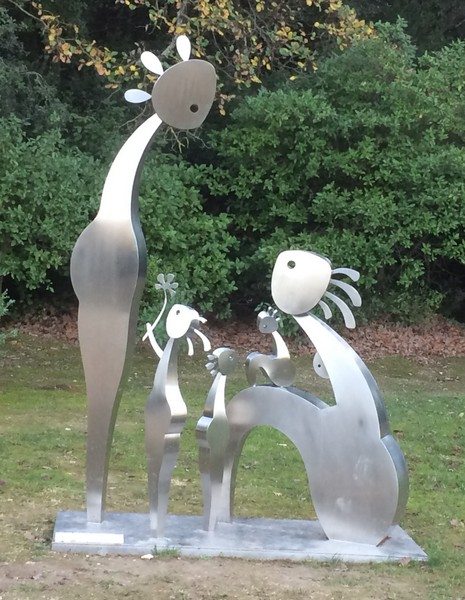
Around the grounds were some interesting metal sculptures by Charles Stratos. Based on family situations the different sculptures of the bubble family were quite sweet.
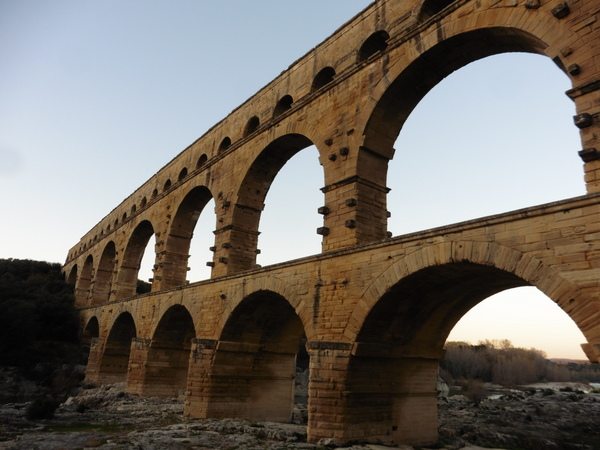
Just on sunset we arrived at the aqueduct and were blown away by its sheer size. In the distance the sun was painting the old city of Nimes a lovely pink colour. On the aqueduct we could even see some of the builders graffiti.
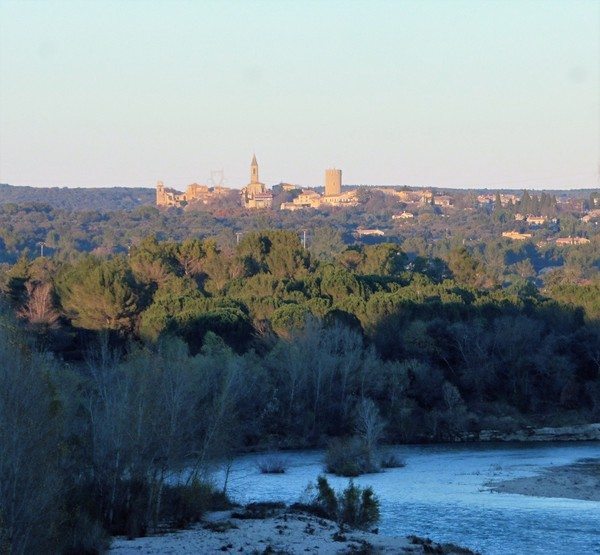
Pont Du Gard is quite expensive to visit, it cost us 12 € for a motorcycle to enter. It is 18 € for a car with 5 people but it is worth a visit if you vistat all areas. Our suggestion would be arrive earlier in the day and spend half a day as there are plenty of areas to explore. More information is available here
Luckily it was only a short run of twenty kilometres to Avignon as by the time we finished at the aqueduct darkness was just setting in.
By the time we reached Avignon it was dark and traffic was in chaos. Roadworks in the city had brought traffic to a stand still. The hotel was situated inside the old walled city and traffic inside the wall was also at a standstill. Once again being on a bike came in handy and we were able to cut up the footpath and found a park about twenty metres from the hotel. After checking in we were able to take our bike gear off and settle in. We are looking forward to exploring Avignon over the next few days.
